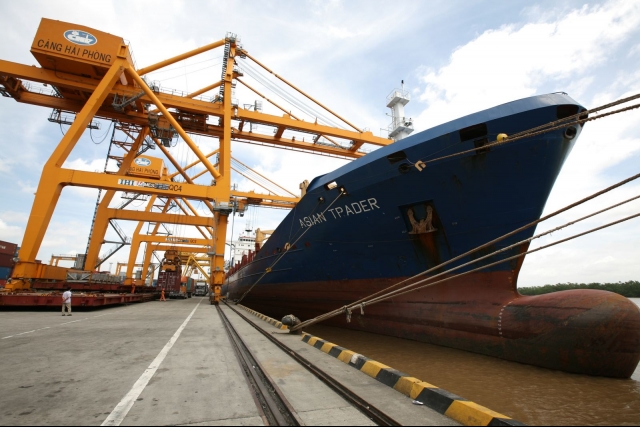The World Bank has reduced its forecast for Vietnam’s economic growth in 2016 from 6.2 per cent to 6 per cent due to negative impacts from both external and domestic factors, according to the Vietnam’s Recent Economic Developments report released on July 19.
Domestic and global factors certain to be felt, World Bank report notes, as forecast of 6.2% growth brought down to 6%.
Mr. Achim Fock, Acting Country Director for the World Bank in Vietnam, said that even with slower growth this year the mid-term prospects for Vietnam remain positive. In order to maintain high growth Vietnam needs to conduct further and broader economic reform to increase the country’s productivity.
Mr. Sebastian Eckardt, the World Bank’s Senior Economist, said that Vietnam’s economic growth has been affected by global events and the weakening growth prospects around the world in major emerging and high-income economies. Monetary policy in major economies such as the EU, the US and China remains accommodative, although greater divergence is expected down the line.
Other external factors come from global trade still being sluggish and commodity prices remaining soft, which will harm Vietnam’s agriculture and manufacturing sectors, the report said.
Brexit added more uncertainties to the global economic situation, in the short term affecting global financial markets and in the long term affecting global growth, trade and investment. The EU accounts for less than 10 per cent of all of Vietnam’s cross-border lending and the UK 2.3 per cent.
Foreign direct investment (FDI) from the EU to Vietnam accounted for less than 8 per cent of Vietnam’s total while that from UK was less than 2 per cent. Exports from Vietnam to the EU accounted for 18.9 per cent of Vietnam’s total and those to the UK were 2.9 per cent, while EU tourists accounted for 12 per cent of Vietnam’s total and UK tourists accounted for 2 per cent.
Based on such figures, World Bank analysts said that “Vietnam’s direct exposure is relatively limited in the EU and the UK,” and exports are high and have been relatively resilient.
Vietnam’s economic growth was down in the first half compared to the strong result in 2015, which can be partly explained by the global economic downturn and agricultural output declining because of drought and salinity, which raise concerns about rural incomes and poverty.
Vietnam’s exports continue to grow but at a slow pace, at 6.2 per cent in the first five months of 2016 compared to 13.8 per cent in 2014 and 7.9 per cent in 2015.
Crude oil exports fell 0.2 per cent year-on-year in 2014, 48.5 per cent in 2015, and 47.2 per cent in the first five months of this year. Non-oil exports, meanwhile, increased 14.6 per cent year-on-year in 2014, 10.8 per cent in 2015 and 7.7 per cent in the first five months of 2016.
The domestic sector saw 11.8 per cent growth year-on-year in 2014, a decline of 2.5 per cent in 2015 then an increase of 3.8 per cent in the first five months of this year, while the foreign invested sector grew 14.8 per cent, 13 per cent and 7.2 per cent, respectively.
“Accumulated fiscal imbalances remain a cause for concern, with the fiscal deficit estimated to have widened to about 6.5 per cent of GDP in 2015,” according to Mr. Fock. “As a result, Vietnam's total outstanding public debt was estimated at 62.2 per cent of GDP, inching quickly towards the ceiling of 65 per cent of GDP. Fiscal outurns in the first months of 2016 suggest that budget pressures persist.”
Mr. Eckardt said that the Vietnamese Government should fulfill its commitment to keeping public debt sustainable and take specific action to balance the budget in the medium term.
VN Economic Times